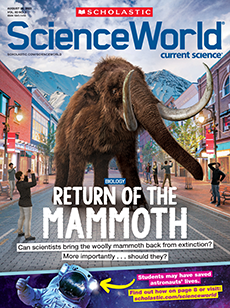On a warm summer night in Mexico, a herd of cattle slumbers in a field. With hardly a sound, a tiny, winged creature flutters down to the ground from a nearby tree. It’s a vampire bat! The small animal could fit in the palm of your hand, but it has a big appetite—for blood. The bat slowly creeps along the grass, toward an unsuspecting cow. Then the bat uses its needle-like fangs to pierce the cattle’s ankle and lap up the blood from the wound.
It's a warm summer night in Mexico. A herd of cattle sleeps in a field. A tiny winged creature flutters down to the ground from a nearby tree. It hardly makes a sound. The creature is a vampire bat! The small animal could fit in the palm of your hand. But it has a big appetite—for blood. It slowly creeps along the grass, toward a sleeping cow. The bat pierces the cattle’s ankle with its needle-like fangs. Then it laps up the blood from the wound.

